About CARS
ACTRIS
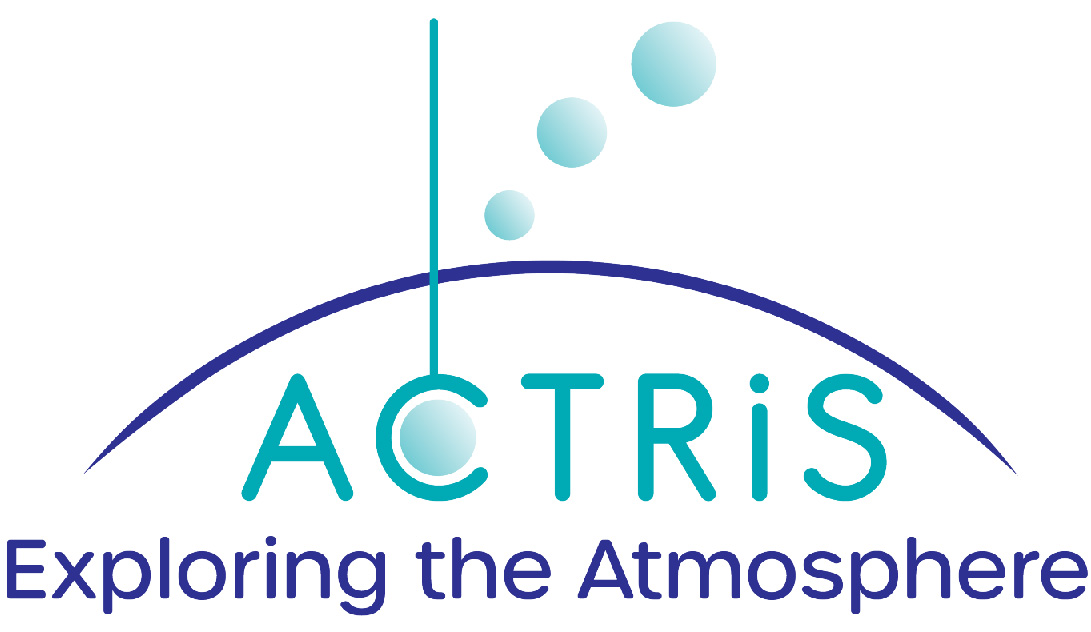 | The Aerosol, Clouds and Trace Gases Research Infrastructure (ACTRIS) is the pan-European research infrastructure (RI) producing high-quality data and information on short-lived atmospheric constituents and on the processes leading to the variability of these constituents in natural and controlled atmospheres. |
ACTRIS operates 112 National Facilities and 8 Central Facilities, distributed over 22 countries.
The National Facilities are developed, managed and operated by national research organizations at the national level. The main task of the National Facilities is the procurement and long-term delivery of high accuracy data concerning aerosols, clouds and minor gases. Data is provided to users according to the ACTRIS data policy.
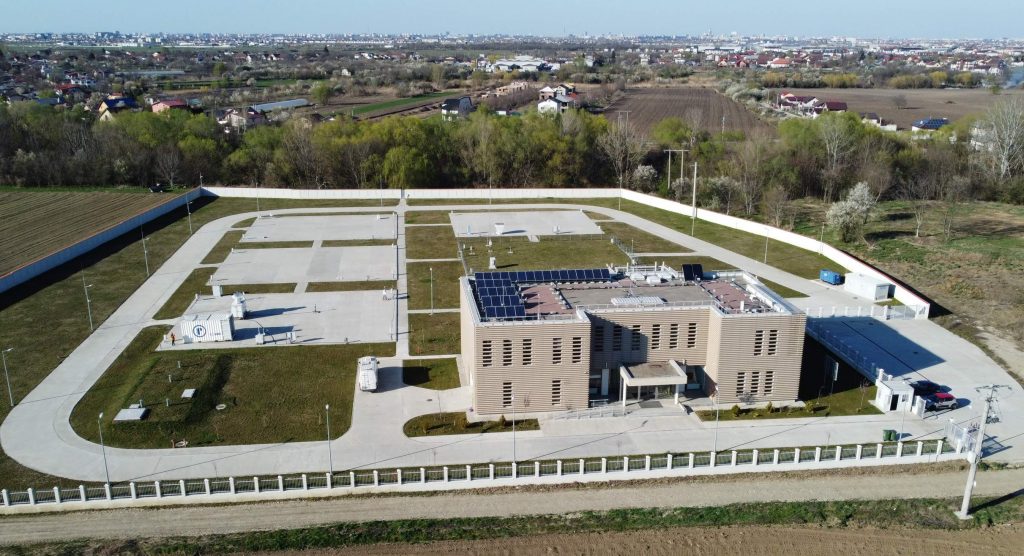



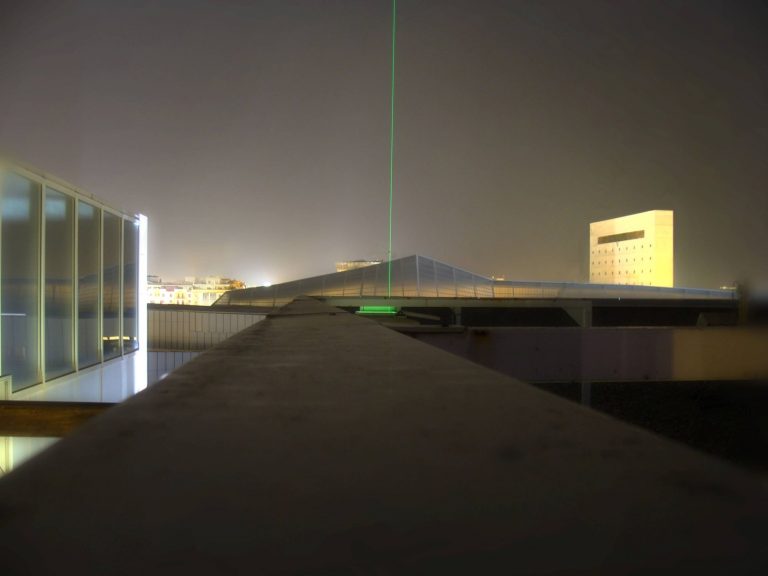
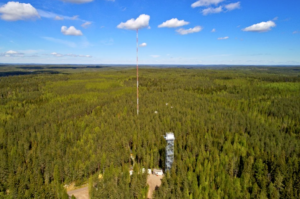

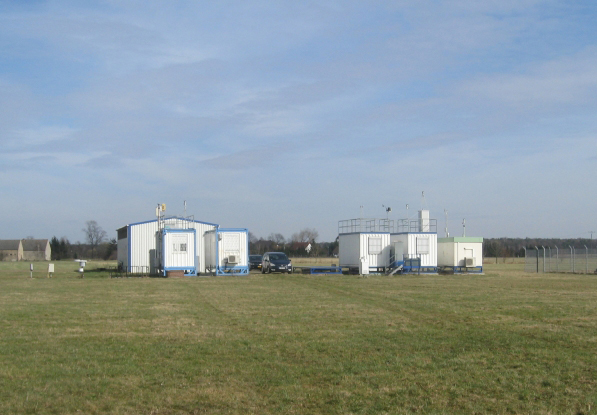

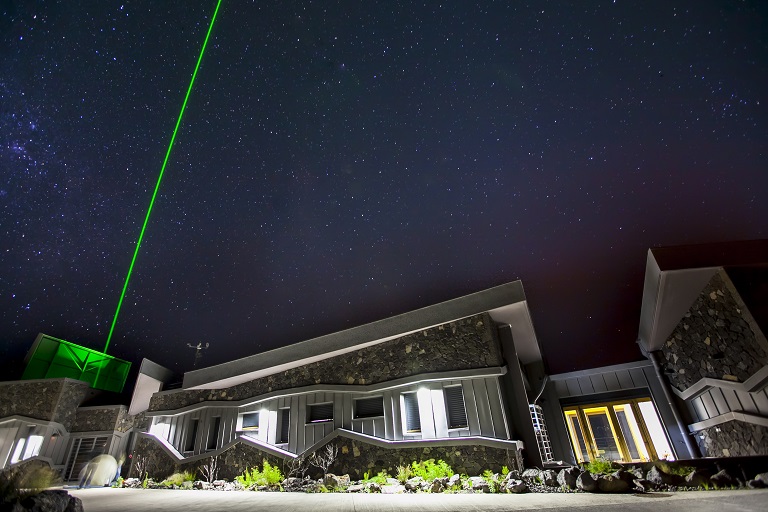
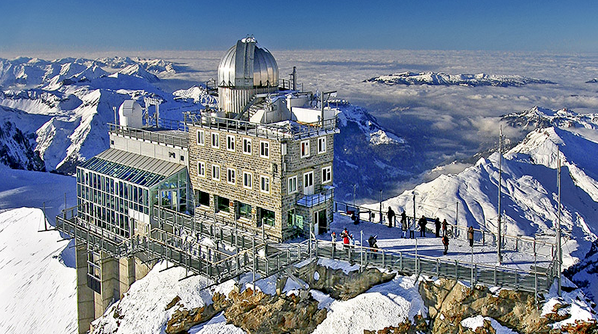

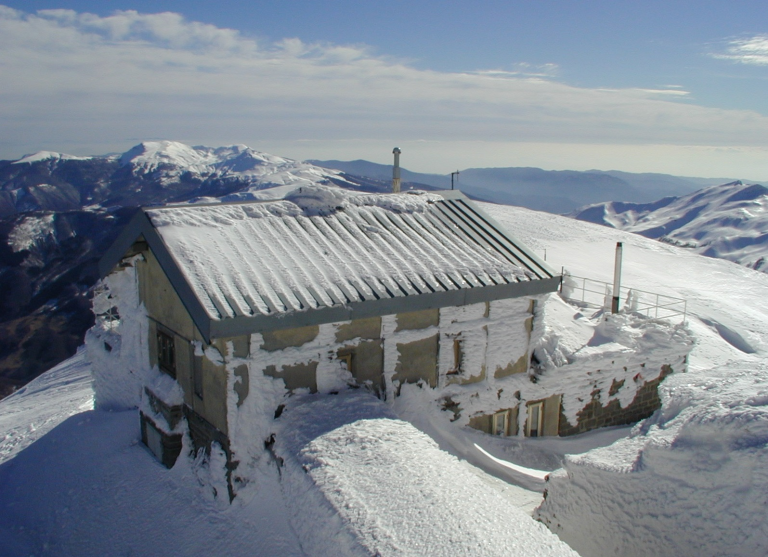
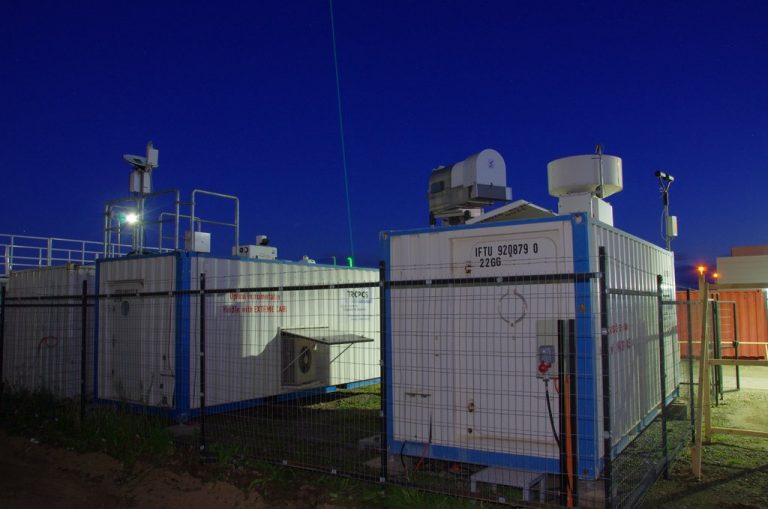
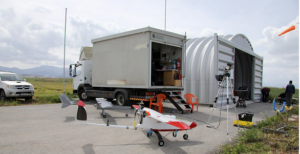
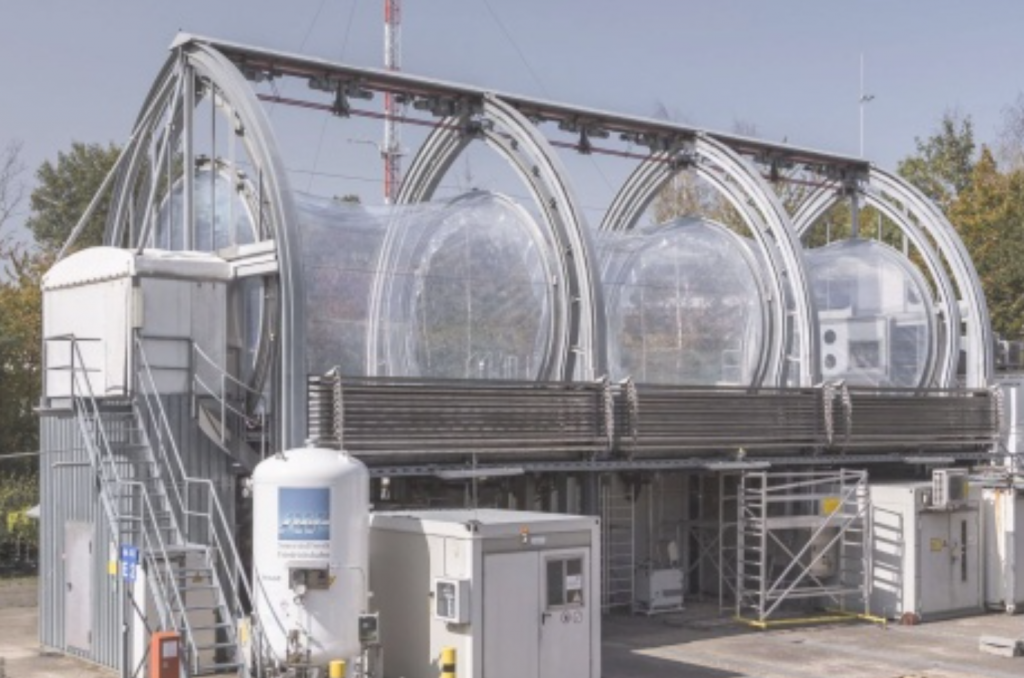
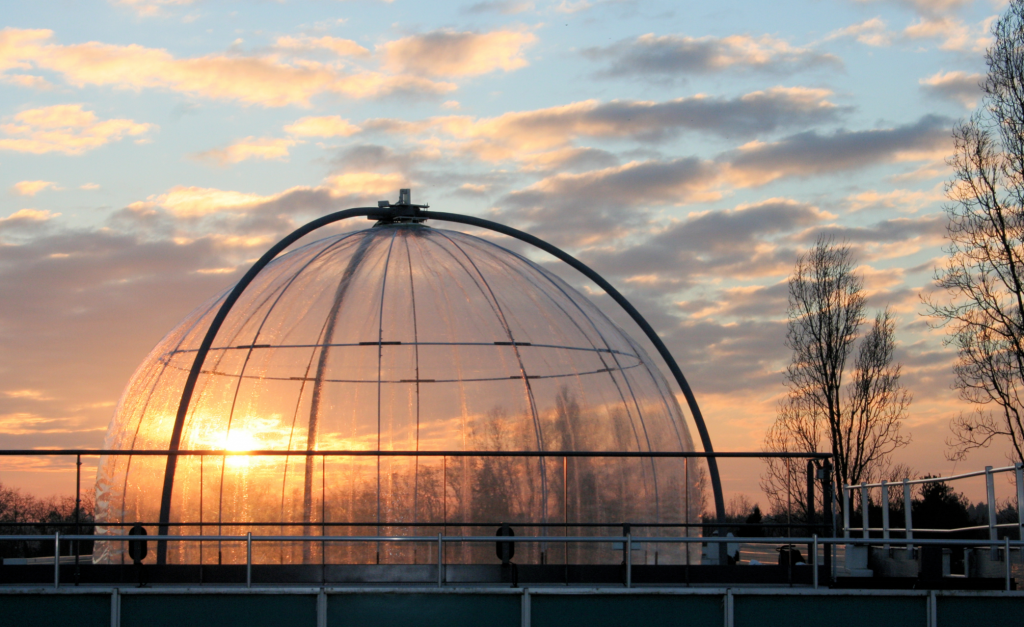
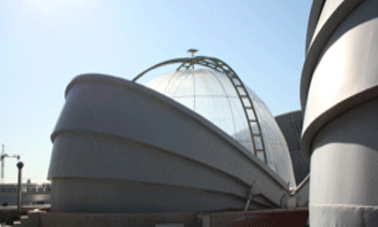
The Central Facilities are centres established at European level. Each Central Facility is operated jointly as a consortium of several units physically located in different European countries. ACTRIS embeds:
* The Head Office – coordinates ACTRIS operations and enables ACTRIS services
* The Data Centre – compiles, archives, and provides access to well documented and traceable ACTRIS measurement data and data products, including digital tools for visualisations, data analysis, and research
* Topical Centres – offer operational support to ACTRIS NFs, and services to users, for quality assurance of the ACTRIS instruments and data
| ACTRIS Topical Centers | Aerosol | Clouds | Reactive trace gases |
|---|---|---|---|
| Remote Sensing | CARS Centre for Aerosol Remote Sensing | CCRES Centre for Clouds Remote Sensing | CREGARS Centre for Reactive Trace Gases Remote Sensing |
| In situ | ECAC-CAIS Centre for Aerosol In situ | CIS Centre for Clouds In situ | CiGas Centre for Reactive Trace Gases In situ |

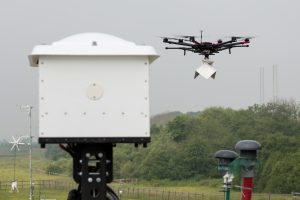
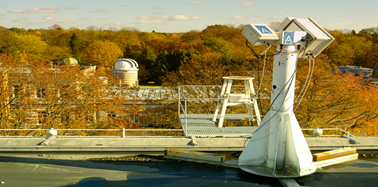
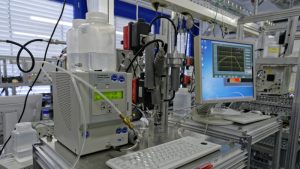
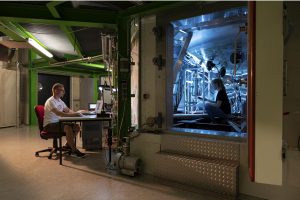
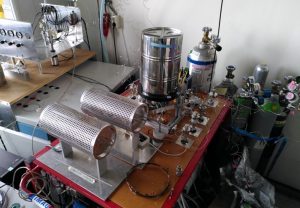
CARS
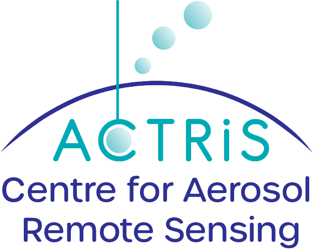 | CARS is one of the six topical centres of ACTRIS. Its mission is to offer operation support to ACTRIS National Facilities operating aerosol remote sensing instrumentation: * Aerosol High-power Lidars (AHL) * Automatic Low-power lidars and Ceilometers (ALC) * Automatic Sun/sky/polarized/lunar Photometer (ASP) Additionally, CARS offers specialized services for the above instruments and related ACTRIS variables, to ACTRIS users. |
CARS main responsibilities:
- Training and consultancy for setting up and running an aerosol remote sensing station
- Measurement and data procedures and tools for QA/QC of the lidar and photometer measurements
- Measurement and data quality monitoring, including calibration of photometers, characterization of lidar optical blocks, direct comparison with reference systems, support for debugging, upgrading and optimizing the instruments
ACTRIS Centre for Aerosol Remote Sensing is organized in 8 Units which are grouped in 3 clusters, one cluster for each measurement technique. The Units are hosted by 8 research institutions, located in 6 countries: Romania, Germany, Italy, France, Spain and Switzerland.
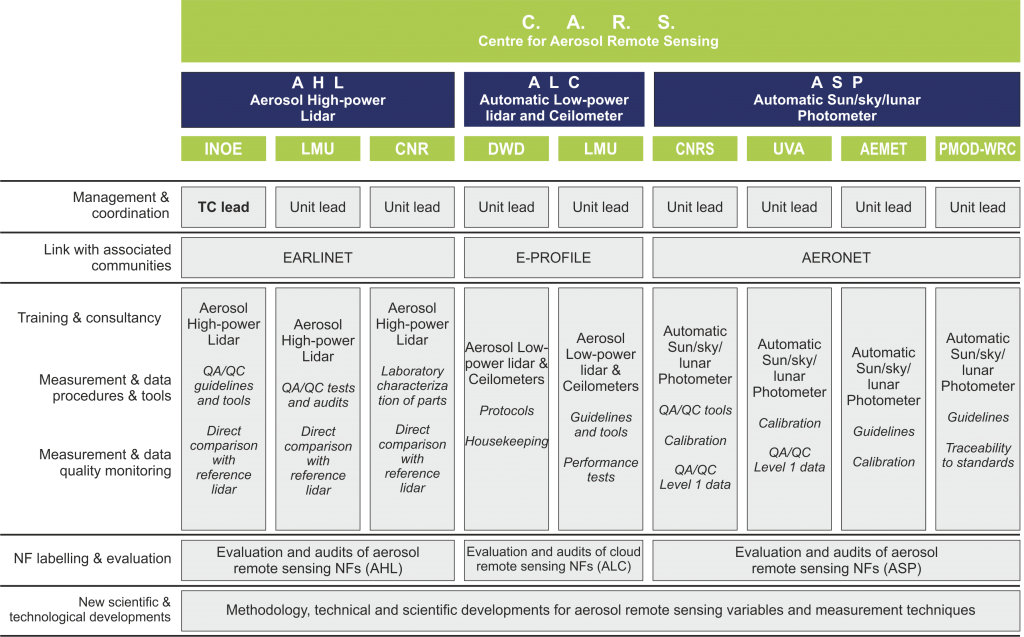
Instruments
Aerosol profile observations are covered in ACTRIS by automatic low-power lidars and ceilometers (ALC) and aerosol high-power lidars (AHL). Due to the differences at the hardware level (e.g. laser power and sounding wavelengths), the data products which can be retrieved from these measurement techniques are essentially different.

Automatic low-power lidars and ceilometers (ALC) are currently used to provide aerosol layering and attenuated backscatter at one wavelength, information which is used in combination with cloud radars and microwave radiometers to complete the cloud classification at the ACTRIS Cloud Remote Sensing National Facilities. In addition, these parameters could be used to study fog formation that is of great importance for visibility studies. The temporal coverage and low overlap of low power lidar instruments is a valuable add-on used to study the diurnal variation of aerosol layers and to trigger advanced measurements performed using high-power lidar instruments. Even single wavelength low-power lidars are able to detect high resolution dynamics of aerosol layers.
Aerosol high-power aerosol lidars (AHL) are aerosol lidar which thanks to the higher power can provide besides the same quantities reported for the ALL, more quantitative information about the aerosol optical properties. In particular, AHL used to provide profile aerosol optical properties (aerosol backscatter coefficient, aerosol extinction coefficient and aerosol linear depolarization ratio) at one or more wavelengths, allowing subsequent calculation of several spectral parameters (Angstrom exponents, lidar ratios) of the lofted aerosol layers, and therefore aerosol typing.

Aerosol column observations are covered in ACTRIS by automatic sun/sky/lunar photometers (ASP)
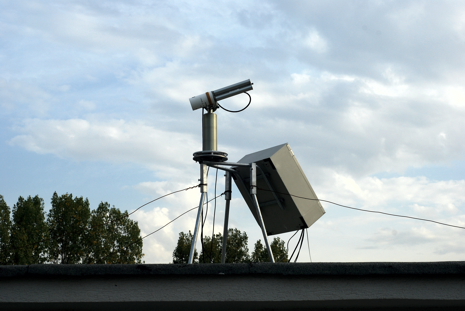
The state-of-the-art photometric measurement techniques and associated retrieval techniques provide aerosol properties both directly (e.g. daytime and night time spectral extinction AOD and daytime downward sky angular, spectral and polarized radiance) and indirectly (size distribution, refractive indexes, single scattering albedo, spherical fraction, scattering properties (Dubovik et al., 2000, 2014).
Synergies between aerosol profile and column observations are being greatly developed within ACTRIS-1/2 to provide higher-level aerosol variables such as daytime extinction, backscatter, absorption and mass concentration (total, fine, coarse) and columnar aerosols optical and microphysical properties.
Variables
ACTRIS aerosol variables are defined in the ACTRIS vocabulary. Aerosol variables under the responsibility of CARS and ARES (ACTRIS Data Centre node for aerosol remote sensing profiling) are listed below.
| Aerosol profile | Aerosol column | Aerosol synergy |
|---|---|---|
| Attenuated backscatter profile Volume depolarization profile Particle backscatter coefficient profile Particle extinction coefficient profile Lidar ratio profile Ångström exponent profile Backscatter-related Ångström exponent profile Particle depolarization ratio profile Particle layer geometrical properties (height and thickness) Particle layer optical properties (extinction, backscatter, lidar ratio, Ångström exponent, depolarization ratio, optical depth) Column integrated extinction Planetary boundary layer height | Column integrated extinction Spectral Downward Sky Radiances Direct Sun/Moon Extinction Aerosol Optical Depth Aerosol columnar properties | Aerosol columnar properties Aerosol profile microphysical and optical properties |